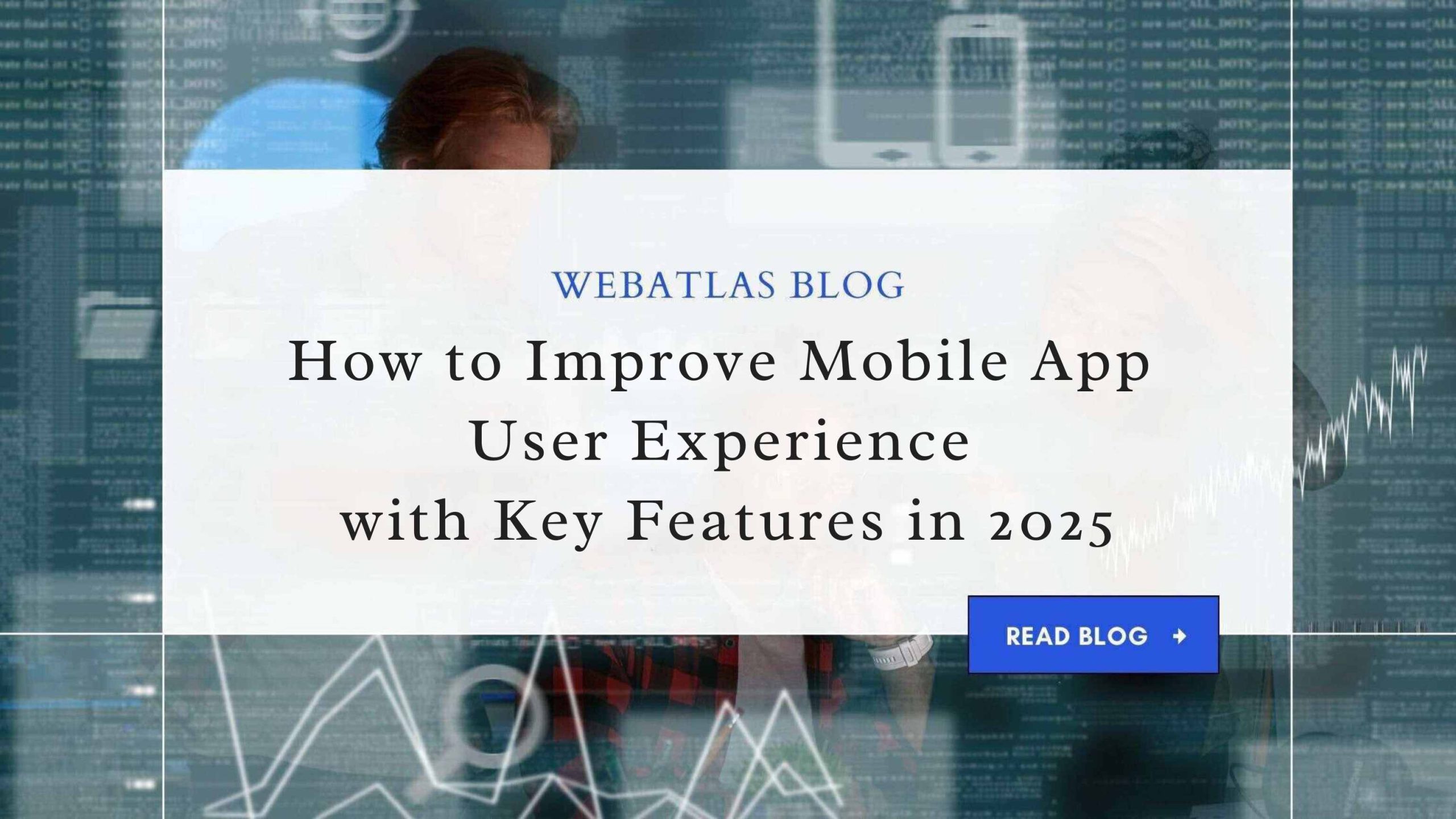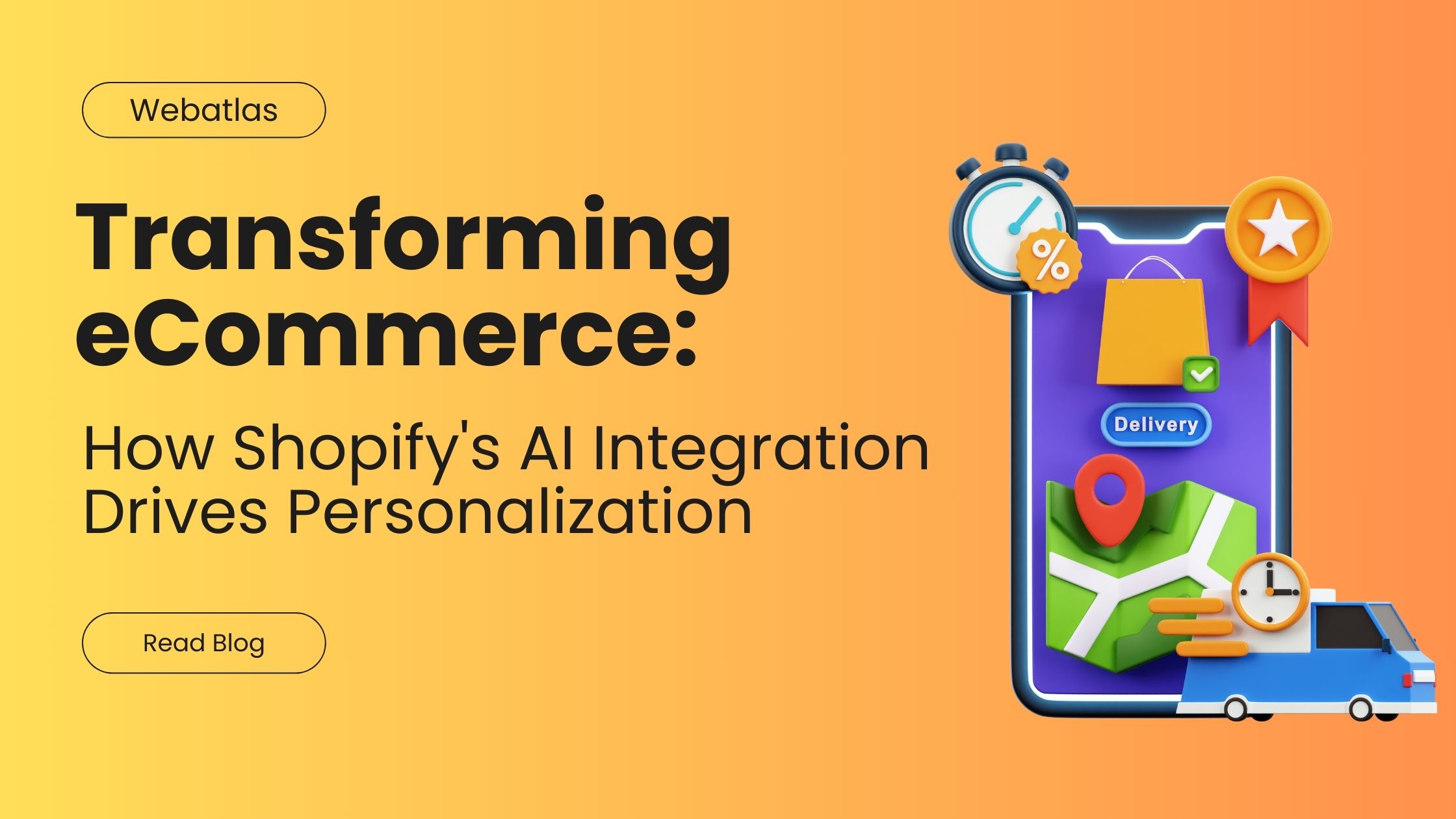Key Features to Include in Your Mobile App for Better User Experience in 2025

In 2025, the mobile app development industry will continue to evolve, driven by advances in technology and changing user preferences. A well-designed mobile app not only captures attention but also provides a seamless, engaging experience. The success of any app lies in its ability to deliver a smooth user experience (UX), which is crucial for retaining users and standing out in a highly competitive market.
This blog will discuss the key features you should include in your mobile app to enhance user experience in 2025, along with showcasing Webatlas’s expertise in developing cutting-edge mobile applications.
1. Personalized User Experience
Personalization is no longer a luxury—it is an expectation. Users prefer apps that can cater to their individual preferences. Leveraging Artificial Intelligence (AI) and Machine Learning (ML) allows mobile apps to provide personalized content, notifications, and recommendations based on user behavior.
For example, an e-commerce app could suggest products based on a user’s previous purchases or search history. This type of personalization enhances user satisfaction and boosts engagement.
Key takeaway: Ensure your mobile app includes AI-driven personalization for a more tailored experience.
Also Read- Native vs. Hybrid Apps: Which is Best for Your Business?
2. Seamless Navigation and Intuitive UI
A mobile app should be easy to navigate with a user interface (UI) that feels intuitive. Users should be able to find what they’re looking for with minimal effort, whether it’s a product, a service, or information. Intuitive UI design can significantly impact user retention and engagement.
Using clear visual hierarchies, easily accessible menus, and logical app flows are essential. A clean, minimalistic design that eliminates clutter makes the app visually appealing while improving its usability.
Key takeaway: Intuitive navigation paired with a clean UI design can significantly enhance the user experience.
3. Fast Loading Time and Performance Optimization
In a world where speed is crucial, mobile users expect fast-loading apps. Delayed load times are one of the primary reasons users abandon apps. By optimizing the app’s performance, such as reducing image sizes, using efficient coding, and minimizing app size, you can ensure that your app loads quickly.
Additionally, mobile apps should run smoothly without glitches or crashes. Performance optimization is essential for providing users with a seamless experience, even when using the app on low-bandwidth networks or older devices.
Key takeaway: Make fast load times and smooth performance a priority in your mobile app development process.
4. Offline Functionality
In 2025, mobile apps that offer offline functionality will be highly appreciated by users. Whether due to network issues or travel restrictions, users may find themselves without access to the internet. By allowing certain features of the app to function offline, such as reading content or filling out forms, you can enhance the user experience and boost app engagement.
Offline functionality can be particularly important for apps in industries like travel, education, and content consumption, where users might need access to critical information without the internet.
Key takeaway: Including offline functionality ensures continuous user engagement, regardless of internet availability.
5. Robust Security Features
In a time when privacy and data security are paramount, users need to feel confident that their personal and financial information is secure within your app. Implementing strong encryption protocols, two-factor authentication (2FA), and other security measures is essential to protect sensitive data.
Additionally, apps handling payments, personal information, or medical data must comply with industry regulations like GDPR or HIPAA, ensuring user privacy is never compromised.
Key takeaway: Robust security features not only protect users but also build trust and credibility for your app.
6. Push Notifications and Smart Alerts
Push notifications are one of the best tools to re-engage users, but they must be used wisely. Too many notifications can lead to user fatigue, resulting in app uninstalls. Smart notifications that are timely, relevant, and personalized can enhance user experience and increase engagement.
AI can help in sending smart alerts based on user preferences, activities, or location, ensuring notifications are meaningful rather than intrusive.
Key takeaway: Integrate smart, personalized push notifications to keep users engaged without overwhelming them.
7. Voice Search and Command Capabilities
With the increasing popularity of voice assistants like Siri, Alexa, and Google Assistant, incorporating voice search and command features into your app can significantly improve user convenience. By enabling users to search for content or perform actions using voice commands, you make the app more accessible to a wider audience.
Voice search can be especially useful in shopping apps, news apps, and service-based platforms where users often multitask and prefer hands-free interactions.
Key takeaway: Integrating voice capabilities ensures your app stays relevant in the growing trend of hands-free technology.
8. Integration with Wearable Devices
Wearables, like smartwatches and fitness trackers, are becoming increasingly popular, and apps that can integrate with these devices provide a superior user experience. Fitness, health, and productivity apps can offer additional features that allow users to track their activities or receive notifications directly through their wearable devices.
With the rise of the Internet of Things (IoT), app integration with wearables can take user interaction to the next level.
Key takeaway: Consider wearable compatibility to expand your app’s functionality and appeal to tech-savvy users.
9. Gesture-Based Navigation
Touch and gesture-based navigation is another feature expected to dominate app designs in 2025. Gestures like swiping, tapping, and pinching make it easier for users to navigate the app, access menus, or perform actions without needing to scroll or click through multiple layers.
Gesture-based interfaces are more interactive and can make navigation more fluid and engaging for users. Apps that focus on media consumption, gaming, and social interactions benefit significantly from gesture-based designs.
Key takeaway: Enable gesture-based navigation to create a more interactive and engaging app experience.
10. Social Media Integration
In the age of social connectivity, users expect to share content, achievements, and purchases easily across their social media channels. Integrating social media features into your app makes it easier for users to connect their profiles, share content, and interact with your app through social platforms.
Additionally, social login options enhance the user experience by simplifying the sign-in process. It eliminates the need for users to create new accounts, offering a quicker, more convenient way to get started.
Key takeaway: Leverage social media integration to increase app engagement and simplify user sign-ins.
Webatlas: Your Partner in Mobile App Development
At Webatlas, we specialize in creating mobile apps that focus on providing exceptional user experiences. Our expertise lies in building intuitive, scalable, and secure mobile applications tailored to meet the specific needs of businesses across industries. We understand the importance of incorporating the latest technology and trends, such as AI-driven personalization, offline functionality, and wearable integration, to ensure your app stands out.
With our vast experience in product development services and our position as a top mobile app development company in India, we ensure that each app we develop not only meets but exceeds user expectations. Our team of experts focuses on delivering seamless navigation, robust security, and optimized performance, ensuring your app runs smoothly across all devices.
Conclusion
The mobile app development landscape in 2025 will demand apps that prioritize user experience above all else. By integrating features like personalization, seamless navigation, fast performance, offline functionality, and security, you can ensure that your app delivers a superior user experience. Additionally, features such as voice search, gesture-based navigation, and wearable device integration will set your app apart in a crowded market.
If you’re looking to create an app that meets the demands of 2025, Webatlas is here to help. Our team of experienced developers and designers ensures that every app we develop is tailored to the specific needs of your business while delivering an exceptional user experience. Let us help you turn your app idea into reality with cutting-edge technology and expert development practices.
Recent Post
Let's talk about your project, or just come and say hello!
Webatlas Technologies is the fastest growing web and mobile app development company



